interior design one point perspective
One-Point Perspective: Drawing a Room
Until artists figured out perspective, there was no accurate system for drawing architecture or other geometric space. In fact, linear perspective was only discovered about 500 years ago, long after humans had figured out algebra and geometry.
If you follow a set of rules, drawing in 1-point perspective is easy.
Perspective drawing comes in a few different flavors, with 1, 2 and 3-point being the most common. However, the principles are essentially the same. All perspective drawings utilize the Horizon Line (HL) and the Vanishing Point (VP). The horizon line is a horizontal line that not only represents the horizon, but also the viewer's eye level. No matter where it is placed on the page, anything above the HL is also above the viewer's eye level, and anything below the HL is below the viewer's eye level. A rule of thumb in 1-point perspective is that straight lines will usually either be vertical, horizontal, or recede toward the Vanishing Point. The Vanishing Point is a point on the horizon line where lines that are parallel to the viewer's line of sight appear to meet. In other words, any set of lines that is going the same direction as the viewer is looking will meet at the VP. These receding lines are called orthogonal lines.
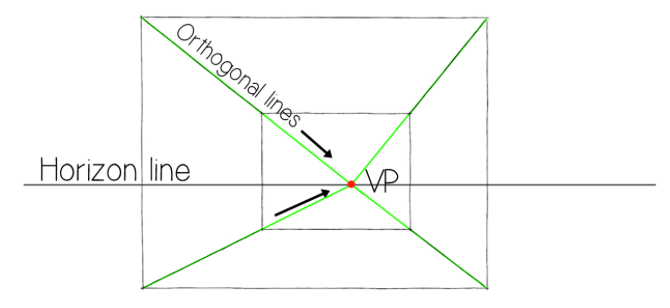
Seem confusing? Don't worry, it will make sense soon.
Here's how to draw a simple room in 1-point perspective.
Step 1:
Draw your horizon line first, anywhere on the page, though closer to middle works best for this exercise. Don't establish a VP just yet. Now, draw the back wall of your room, using only horizontal and vertical lines, making sure at least part of it overlaps the HL. Add any elements you choose– a door and a window should work just fine. The back wall can be square or rectangular, but keep it small enough that you will have room on the page later to add side walls, floor and ceiling.
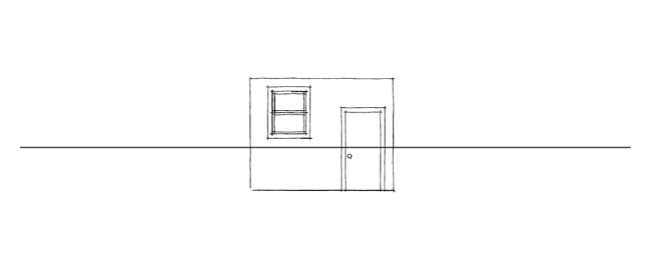
Step 2:
Now comes the fun part. You can add your vanishing point anywhere inside the room along the horizon line. The VP will represent the viewer's point of view. From the VP, draw your orthogonal lines out, making sure they go through the corners of the room. Don't worry that this is not a perfect X– that would only happen if your back wall was a perfect square and the VP sat directly in the center of it.
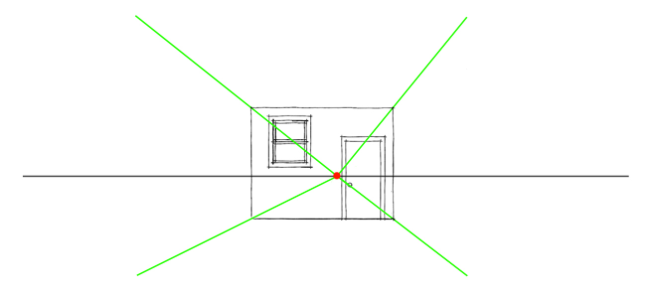
Step 3:
At an arbitrary point along one of the orthogonals, draw a new box, using only vertical and horizontal lines that intersect at each orthogonal. You've already created a room in 1-point perspective! At this point you can erase the HL inside your room, making sure to leave the VP.
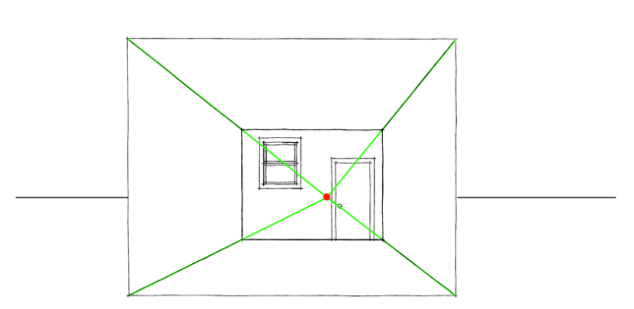
Step 4:
Of course, a room needs furniture, so you can use the same principles to add them to the room. This time you will work from the front back toward the VP. Draw the front face of the furniture first, then add orthogonal lines back to the vanishing point from every corner.
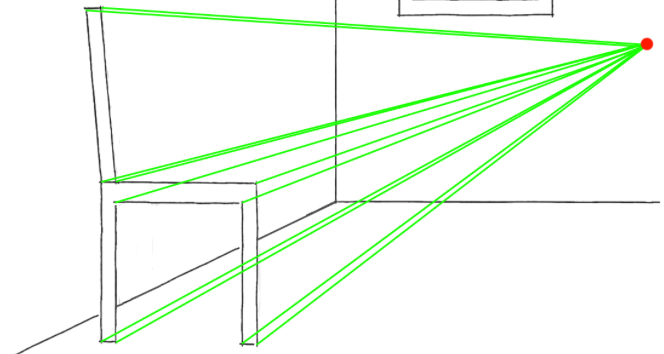
Step 5:
Set the depth of your chair by choosing a point along an orthogonal line (closer to the chair than the VP is best). Work your way around all the orthogonal lines, making sure each lines is perfectly parallel to its corresponding line on the front face of the chair. You have now drawn the back face of your chair.
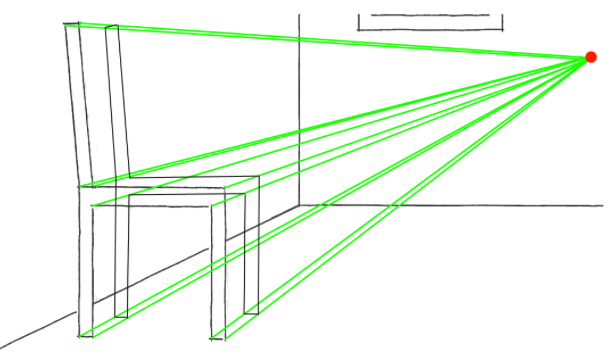
Now add the lines across. You can also use this method to set the depths of the individual legs, etc.
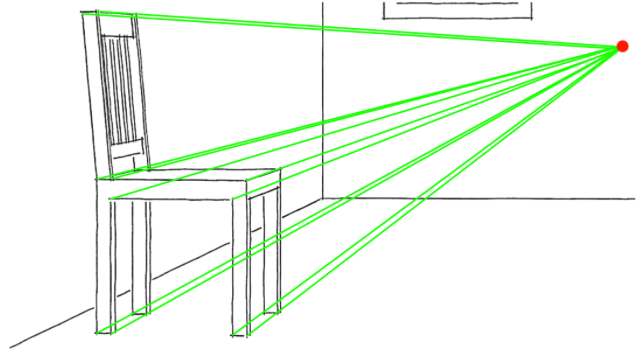
Step 6:
Do the same for any other furniture you'd like to add. Windows are even easier: just draw a set of vertical lines connected by orthogonals to make a rectangle in 1-point perspective on the wall. When you're done, erase the orthogonal lines and VP and there you have it. A perfect 1-point perspective room!
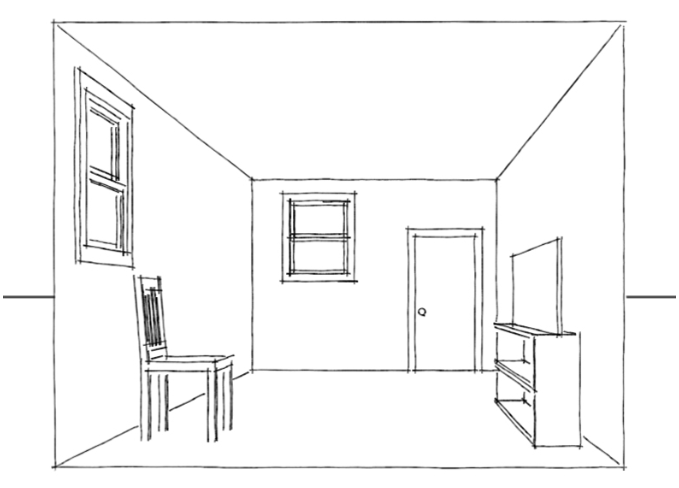
As with anything, drawing in 1-point perspective gets easier with practice. You might also enjoy learning how to draw an ellipses in perspective and draw landscapes in perspective.
Have you drawn a room in 1-point perspective before? Which room in your house would you like to try?
interior design one point perspective
Source: https://www.craftsy.com/post/one-point-perspective-drawing-a-room/
Posted by: ginngrens1986.blogspot.com

0 Response to "interior design one point perspective"
Post a Comment